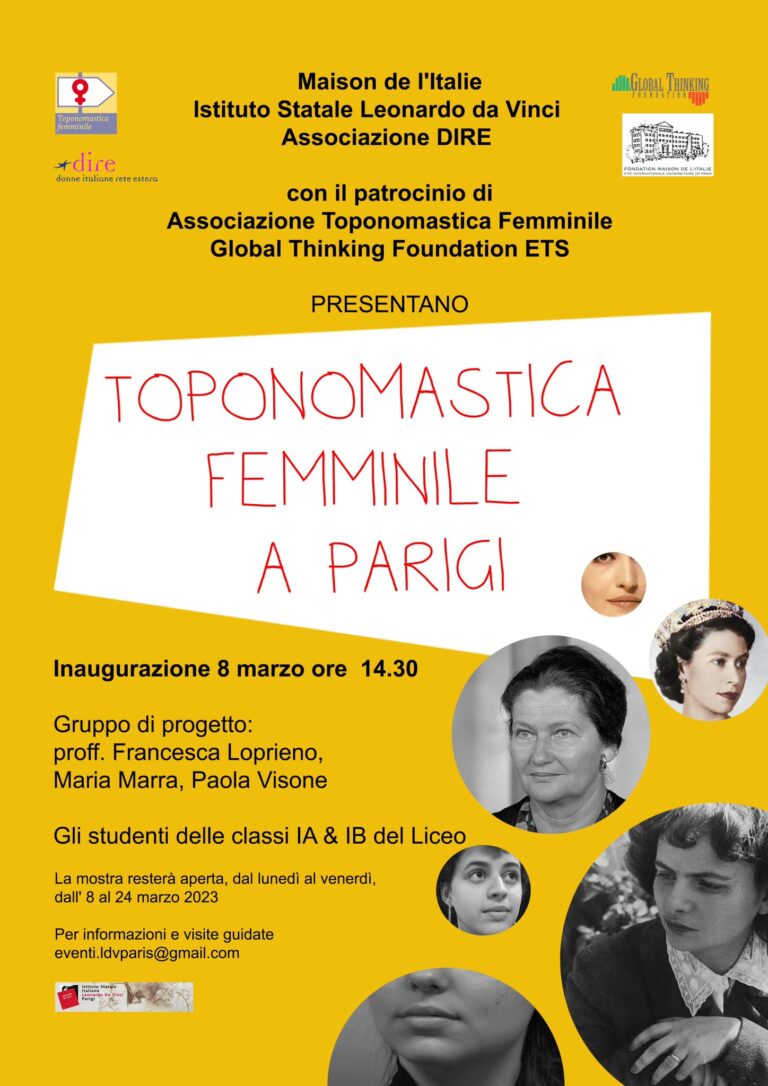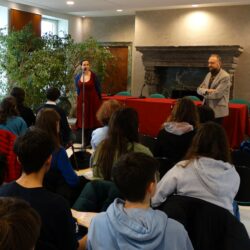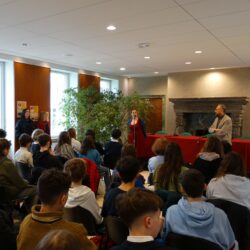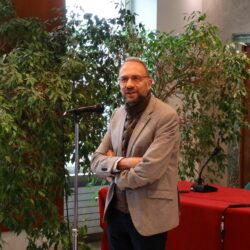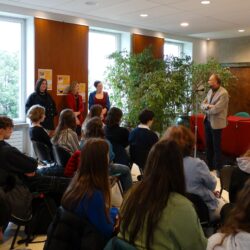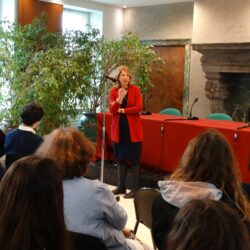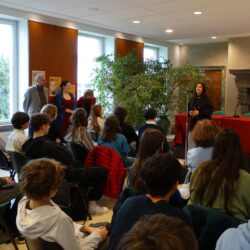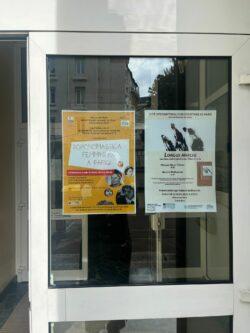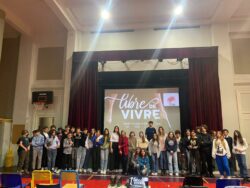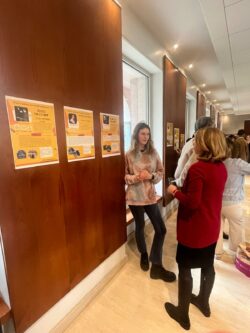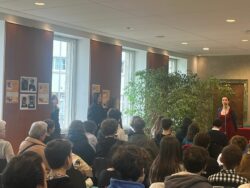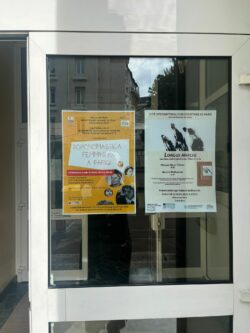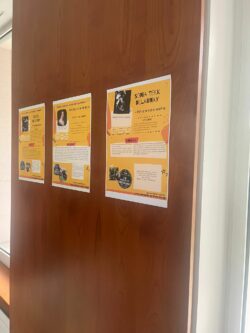Libere di… VIVERE On The Road
The gallery dedicated to an itinerary among the female monuments.
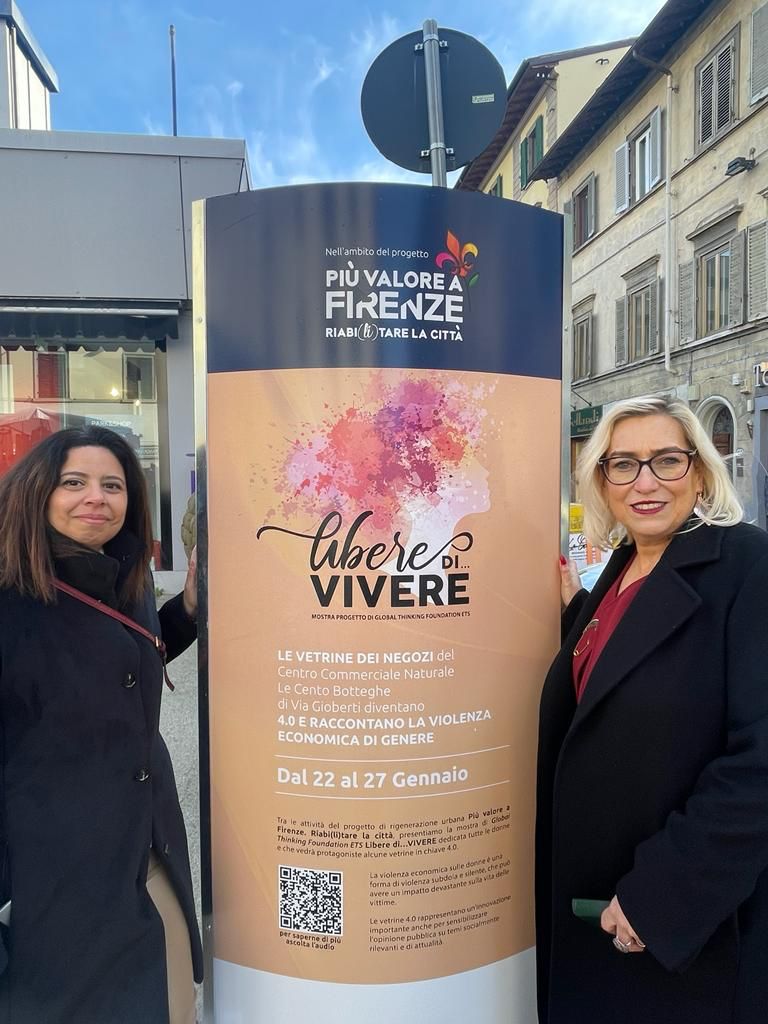
More value to Florence - Rejuvenating the city
From January 22 to 27, 2024, the project “More value to Florence – Rejuvenating the city” will take place, focusing on urban regeneration.
Among the exhibitions is the show “Free to…LIVE!” by the Global Thinking Foundation, dedicated to all women and featuring some shop windows in a 4.0 perspective. The 4.0 shop windows represent a significant innovation aimed at raising public awareness about socially relevant and current issues.
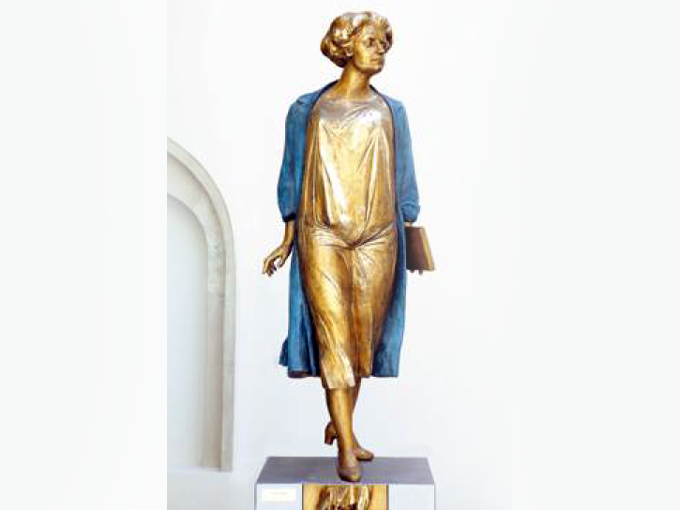
Ada Negri di Mauro Ceglie
My apologies for the oversight. Here’s the translation in English:
Sculptor Mauro Ceglie, born in Santo Stefano Lodigiano in 1955, perfected his apprenticeship, particularly in the use of marble, in the workshops of Carrara. He also gained experience for three years alongside a master of sculptural techniques, Francesco Messina, from whom he assimilated a sense of rigor. In 1981, he was recognized by Milanese critics as an emerging figurative-modern sculptor, receiving significant attention in the Comed art yearbook.
He received the first prize for sculpture at the Biennale Dantesca in Ravenna, the Biennale Città di La Spezia, and the Quadriennale di Cremona. In 2002, he was acknowledged for his professionalism by the Rotary Club and the Cultural Center S. Cristoforo di Lodi.
The work of Ada Negri has been shaped in bronze with a two-color patina by the foundry. The artwork is located in Lodi.
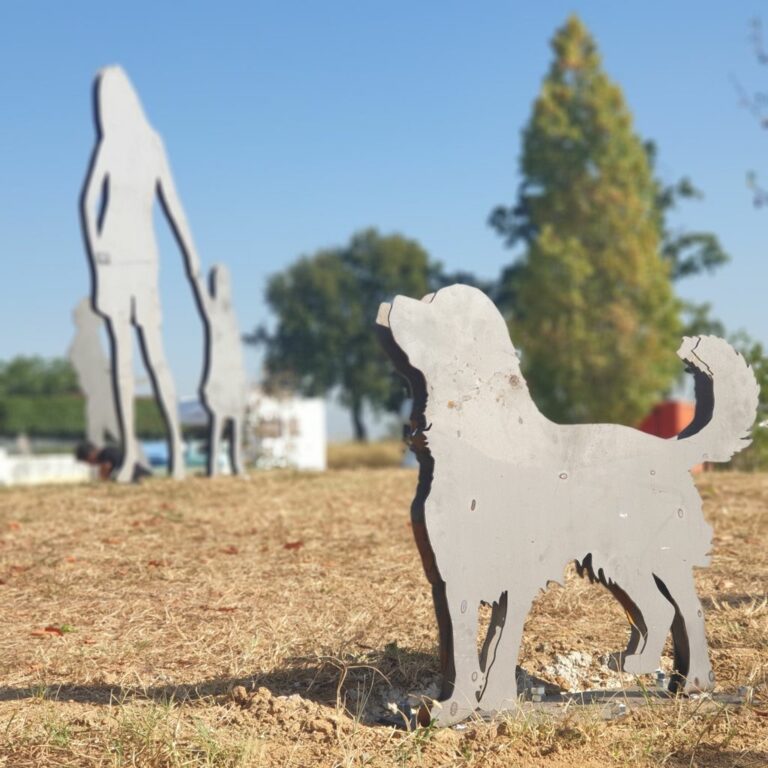
The family of Osvaldo Moi
Sculptor since childhood, Osvaldo Moi has always shown a strong inclination towards sculpture. Using a simple knife, and later with the innovative pencil sharpener, he engaged in creating pencils with the most extravagant shapes even during elementary school, away from the teacher’s gaze. Since then, his unique style, sometimes ironic, always original, follows essential curves and a love for detail. His works are primarily crafted using bronze and precious woods. He incorporates innovative materials such as aluminum, glass-resin, plexiglass, and epoxy resins. He particularly enjoys expressing himself in the figurative, but he also ventures into surrealism with his sculptures. As a versatile creative, his works often nod towards design. As a former Non-Commissioned Officer and helicopter pilot in the Italian army since 1980, during his 37 years of service, when not abroad or on a mission, he consistently devoted his free time to the ongoing challenge with himself through the exploration of materials and the play of forms.
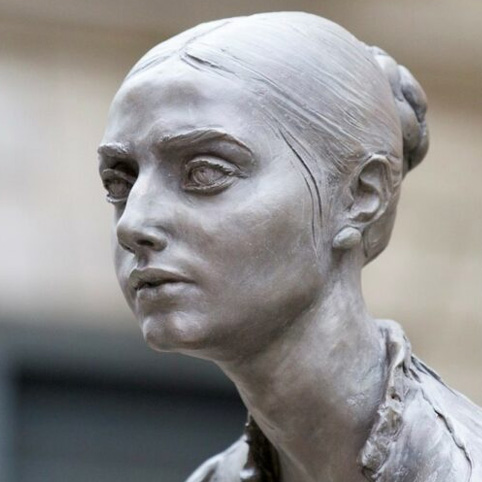
Cristina Trivulzio di Belgiojoso
Cristina was born in 1808 and lived during the height of the Italian Risorgimento. She had contacts with all the major figures of the time and supported insurrections. In 1838, she had a daughter and separated very early from her husband Belgiojoso. She organized a battalion in Naples to contribute to the Cinque Giornate di Milano, directed hospitals in Rome during the clashes of 1849, corresponded with Carlo Alberto and Napoleon III, hosted salons in Paris with illustrious guests, and was rumored to have flirtations with poets, historians, and musicians. She ventured alone to the East, where she organized an agricultural community from scratch.
In 1855, she returned to Locate, on the outskirts of Milan, where she had built nurseries, schools, and modernized the town, bringing it to a social level far above the typical situation of that period.
The statue is located in Piazza Belgioioso in Milan and was created by Giuseppe Bergomi.
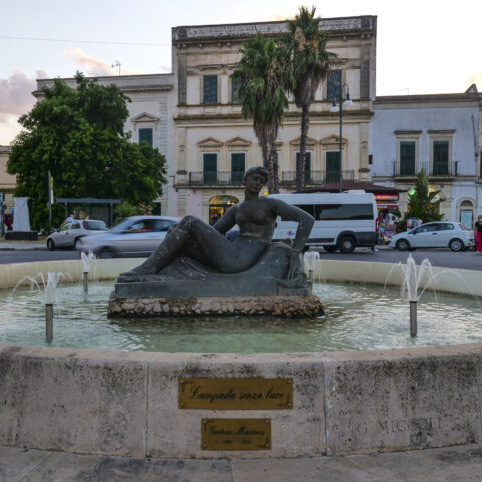
La lampada senza luce
We are in Puglia, in Galatina, to admire the artwork “La Lampada senza Luce.” A feminist monument created in 1928 by the artist Gaetano Martinez, who, in this portrayal of a lady, develops an enigmatic female figure, resembling a bather reclining on a cloth, depicted in a pose freely inspired by Michelangelo’s Medici tombs. The sculpture, known as ‘la pupa’ by the inhabitants of Galatina, crushes a human face under one foot, and in the figure, it is possible to discern another face under the right thigh, wrapped in fabric. This symbolic image aims to represent the beauty and freedom that triumph over male oppression and the obscurantism of the time.
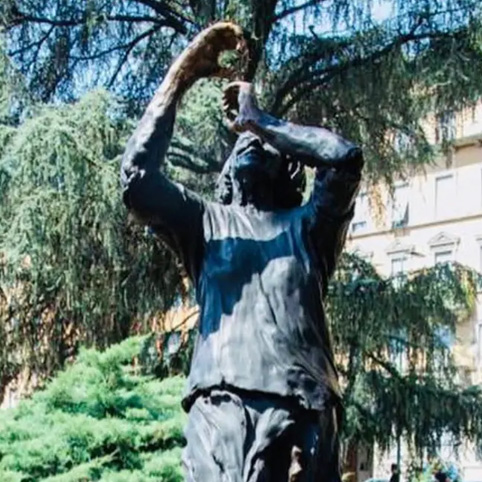
Margherita Hack di Daniela Olivieri
Deceased in 2013, Margherita Hack was the first woman in Italy to lead the Astronomical Observatory, elevating it to become one of the most renowned in the world. Milan decided to dedicate a statue to her: the first, on Italian public soil, celebrating a female scientist. The artwork is installed in Largo Richini, in front of the Università Statale, and is titled “Sguardo Fisico,” created by the versatile Bolognese artist Sissi (born Daniela Oliviero), who has always been attentive to the representation of the feminine.
The statue depicts Margherita Hack emerging from a vortex (the galaxy she studied with enthusiasm), and without a pedestal, almost reminding us of the practical spirit of the scientist, who is distinctly recognizable with her tousled hair, physique, style, and wrinkles on her face. It is not a holy image; it is the statue of a remarkable scientist in her normalcy.
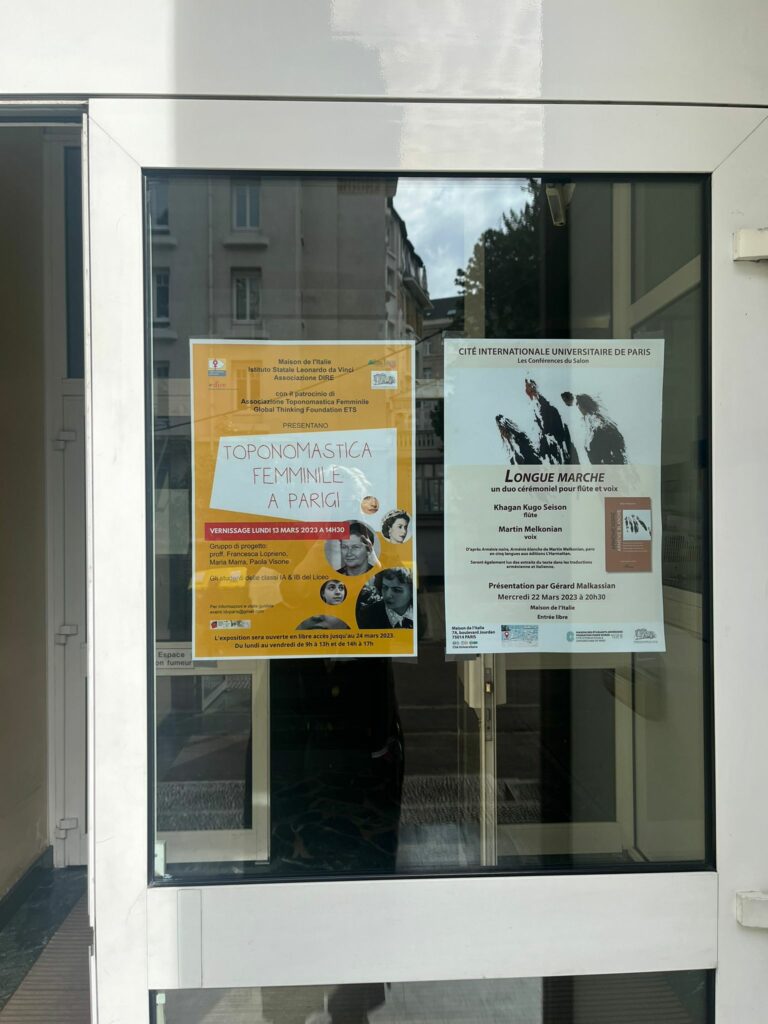
1st-year B and 1st-year A students
On the occasion of International Women’s Rights Day, on March 13, a very stimulating meeting was held with the students at the Italian Liceo Leonardo da Vinci in Paris, coordinated by Professor Paola Visone and our representative for relations with Italian institutions, Elena Rossi. The Foundation’s activities were presented, followed by the screening of the documentary film “Libre de…. VIVRE.”
Also on this International Women’s Day, Maison d’Italie hosted the inauguration of the exhibition “Toponomastica Femminile di Parigi,” organized by the students of the first classes of the Italian Liceo Leonardo da Vinci, coordinated by professors Francesca Loprieno, Maria Marra, and Paola Visone, and promoted by the Global Thinking Foundation (the Global Thinking France Association) in collaboration with DIRE and other Italian associations.
Toponomastics is the branch of linguistics that deals with the set of names given to geographical entities and is dedicated to their study to deepen their formation and dissemination on a geographical and historical level. More precisely, with this project, the students of the Italian Liceo Leonardo da Vinci highlighted the streets named after women.
It emerges that in Paris today, 8% of street names are feminine, compared to 59% masculine, and 33% are neutral (neither masculine nor feminine). In particular, it is evident that in the Grenelle neighborhood of the 15th arrondissement, there is a higher concentration of streets with feminine names.
Comparing this with one of the most well-known Italian cities, Milan, we see that there are 3.31% feminine street names, 59.7% masculine, and 36.99% are neutral.
A Project of:

Con il patrocinio 2025 di:


